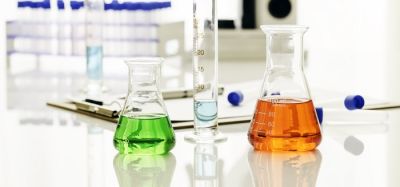API nitrosamines: method sensitivity issues
Posted: 25 August 2022 | Dave Elder (David P Elder Constultancy) | 2 comments
Here, David Elder discusses the risks presented by active pharmaceutical ingredient nitrosamines and explains how European and US guidance differs on their acceptable levels.
HARDLY A DAY goes by without mention of a newly emerging active pharmaceutical ingredient (API) nitrosamine, eg, nitrosamine propranolol.1 This has led to a great deal of pre-competitive data sharing. For instance, Lhasa initiated a Nitrites in Excipients database to facilitate risk assessment of drug products, which was recently published.2,3 The database categorises excipients thus: 1) excipients show varying nitrite contents with pronounced batch-to-batch variance, 2) the nitrite impact is dependent on the amount of excipient in a product, 3) these excipients show low nitrite levels and low variability, resulting in an average value of 1 μg/g nitrite, and 4) different excipient vendors show pronounced differences in nitrite levels. As the data is anonymised it will not be possible to select excipient suppliers based on lowest available nitrite levels, but it may prompt some suppliers to publish this information as it could provide a competitive advantage.
This data provides invaluable insight into the likelihood of nitrites in a drug product formulation. The risk assessment can now be simplified into three major factors:
- Are nitrites likely to be present in excipients? The prevailing data suggests that their presence is ubiquitous
- What is the pH (for liquid and semi‑solid formulations) or the micro‑pH of a slurry of the solid oral dosage form? Basic pHs will often discharge the risk as nitrous acid, the likely nitrosating agent, can only be formed from nitrites under acid conditions
- Is the API nitrosatable? Many secondary and tertiary amines can readily be nitrosated.3
Once the risk assessment is complete it is often necessary to initiate testing. This is a straightforward exercise for the short-chain alkyl nitrosamines, ie, N-Nitrosodimethylamine (NDMA), where acceptable intakes (AIs) are established and easily accessible, as are methods of suitable sensitivity.4,5 In contrast, AIs for API nitrosamines are not typically known, nor is there clear, aligned guidance in this key area. The European Medicines Agency (EMA) advocates 18 ng/day6 as the default AI, where the US Food and Drug Administration (FDA) supports a value of 26.5 ng/day for novel API nitrosamines.7
The AI is important as it enables the analytical target profile (ATP) to be set for the novel nitrosamine; however, the higher the maximum daily intake (MDI) for the drug, the lower the AI in parts per billion (ppb). For example, a drug with an MDI of 4000 mg/day – which is quite common for antibiotics and antivirals – would translate to an AI of 4.5 ppb in the EU Pharmacopoeia (Ph. Eur.) and 6.62 ppb in the US Pharmacopeia (USP). The most sensitive method currently available is USP Procedure 4 (triple quadrupole gas chromatography‑tandem mass spectrometry [GC-MS/MS – triple quad]) which has a limit of quantitation (LoQ) of 5 ppb.8 As such, detection of an API nitrosamine with an MDI of 4000 mg/day may be feasible for FDA submissions, but probably not with the EMA.
The caveat is that these methods were developed for APIs, not drug products, where interference from excipients will be significantly greater, potentially increasing the analytical LoQ. Indeed, many over the counter (OTC) companies are struggling because their drugs typically have higher MDIs. The irony is that there is clear and compelling evidence that larger API nitrosamines are typically less toxic than the simpler short alkyl chain nitrosamines.9
A recent open-access publication discusses the generation of AIs for unknown API nitrosamines.9 The authors catalogued these complex nitrosamines based on common structural features, identifying 13 groups in total. Carcinogenicity data was then reviewed for structurally relevant nitrosamines and group-AIs were derived based on the most potent compound within each group. The authors indicated that the AIs of several of these API nitrosamine groups were found to be much higher than the corresponding simple nitrosamines, which results in a commensurately higher analytical LoQ.
About the author
Dave Elder has nearly 40 years of service within the pharmaceutical industry at Sterling, Syntext and GlaxoSmithKline. He is now an independent GMC consultant. He is a visiting professor at King’s College, London and a member of the British Pharmacopoeia. He is a member of the Joint Pharmaceutical Analysis Group (JPAG) and the Analytical Division Council of the Royal Society of Chemistry.
References
- Health Canada, Health product recall: Inderal-LA: Nitrosamine Impurity. 02 March 2022. [Internet]. Recalls-rappels.canada.ca. [cited 30 July 2022]. Available from: https://recalls-rappels.canada.ca/en/alert-recall/inderal-nitrosamine-impurity
- Nitrites in Excipients [Internet]. org. 2022 [cited 30 July 2022]. Available from: https://www.lhasalimited.org/Initiatives/nitrites.htm#:~:text…
- Boetzel R, Schlingemann J, Hickert S et al. A Nitrite Excipient Database: A useful Tool to Support N-Nitrosamine Risk Assessments for Drug Products. Journal of Pharmaceutical Sciences. 2022;. Available from: https://doi.org/10.1016/j.xphs.2022.04.016.
- General chapter 2.5.42. N-Nitrosamines in active substances and revised sartan monographs. European Directorate for the Quality of Medicines & HealthCare. 2022 [cited 30 July 2022]. Available from: https://www.edqm.eu/en/-/general-chapter-2-5-42-n-nitrosamines-in…
- USP: <1469> Nitrosamine Impurities.
- Assessment report. Procedure under Article 5(3) of Regulation EC (No) 726/2004. Nitrosamine impurities in human medicinal products. 25 June 2020. EMA/369136/2020.
- Updates on possible mitigation strategies to reduce the risk of nitrosamine drug substance-related impurities in drug products. [Internet]. U.S. Food and Drug Administration. 18 November 2021. [cited 30 July 2022]. Available from: https://www.fda.gov/drugs/drug-safety…
- GENERAL CHAPTER <1469> NITROSAMINE IMPURITIES. Presented to: Prescription/Non-Prescription Stakeholder Forum November 19, 2020. [Internet]. Usp.org. 2022. [cited 30 July 2022]. Available from: https://www.usp.org/sites/default/files/usp/document/stakeholder-forum…
- Dobo KL, Kenyon MO, Dirat O et al. Practical and Science-Based Strategy for Establishing Acceptable Intakes for Drug Product N-Nitrosamine Impurities. Res. Toxicol. 2022, 35, 3, 475–489.










18 ng/day is the accepted TTC for all new identified Nitrosamine and not 26.5 ng/day.
Otherwise established AI based on TD(50) or SAR approaches accepted
I can’t find that FDA supports a value of 26.5 ng/day for novel API nitrosamines in the reference page. I would appreciate it if you could teach me where it is.